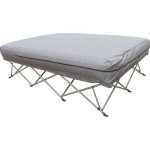How Long Can Bed Bugs Live in Plastic?
Bed bugs are tiny, parasitic insects that feed on human blood. They are highly adaptable and can survive in a variety of environments, including plastic. While plastic doesn't provide a suitable long-term habitat for bed bugs, they can survive for a significant amount of time in sealed plastic containers. Understanding how long bed bugs can live in plastic is essential for effective pest control and prevention strategies.
Factors Influencing Bed Bug Survival in Plastic
The lifespan of bed bugs in plastic depends on various factors, including the type of plastic, temperature, humidity, and access to food and water.
Type of Plastic: Bed bugs can survive longer in thicker, opaque plastic, such as those found in storage bins or luggage, compared to thin, transparent plastic, such as plastic bags. This is because thicker plastic offers better insulation and protection from external conditions.
Temperature: Bed bugs are more likely to survive in a warm, humid environment, especially if the temperature is above 70°F. Extreme temperatures, both hot and cold, can kill bed bugs, but they can survive for a considerable time in sealed plastic containers at moderate temperatures.
Humidity: Similar to temperature, a humid environment within the plastic container will help bed bugs survive. However, extreme humidity can also be detrimental, leading to mold growth and making it challenging for bed bugs to breathe.
Food and Water: As with any living creature, bed bugs need access to food and water to survive. While they can live for extended periods without food, they will eventually expire if they lack access to a blood source.
Bed Bugs can Survive in Plastic for Weeks
Even in unfavorable conditions, bed bugs can survive in sealed plastic containers for several weeks. If the plastic container is not sealed tightly, bed bugs could escape to find a more suitable habitat.
The exact duration of their survival depends on the factors mentioned above. However, it's crucial to understand that bed bugs can survive for a considerable time in plastic, making it essential to handle any suspected bed bug infestations promptly.
Preventing Bed Bug Infestation in Plastic Items
To prevent bed bugs from infesting plastic items, follow these steps:
Inspect Items before Storing: Thoroughly inspect any plastic items before storing them, especially if they have been in contact with bed bug-infested areas. This includes luggage, furniture, and other belongings.
Use Sealed Containers: Store items in airtight plastic containers to prevent bed bugs from entering.
Clean Regularly: Regularly clean plastic containers and items with soapy water to remove any potential bed bugs or eggs.
Heat Treatment: Consider using heat treatment to kill bed bugs in plastic items. Heating items to 120°F for 30 minutes will kill all stages of bed bugs, including eggs.
Conclusion (Avoiding conclusions):
While bed bugs are highly adaptable and can survive for several weeks in plastic containers, it is important to take measures to prevent them from infesting these items. By inspecting, cleaning, and storing items properly, you can significantly reduce the risk of bed bug infestations.

How Long Do Bed Bugs Live In A Plastic Bag Abc Blog

How Long Do Bed Bugs Live Mcdonald Pest Control

Bed Bugs Pestrid S

How Long Can Bed Bugs Live In A Plastic Bag Ess Universal

How Long Can Bed Bugs Live Without Food Moyer

Where Do Bed Bugs Live How To Find Their Hiding Spot Terminix

How Long Can Bedbugs Survive In An Ordinary Mattress Without Human Sweat Or Blood For Liquid Intake Quora

Can Bed Bugs Live On Plastic Mattresses Prohealth Pest Control

Bed Bug Wikipedia

Bed Bug Prevention And Control In The Home Umn Extension







